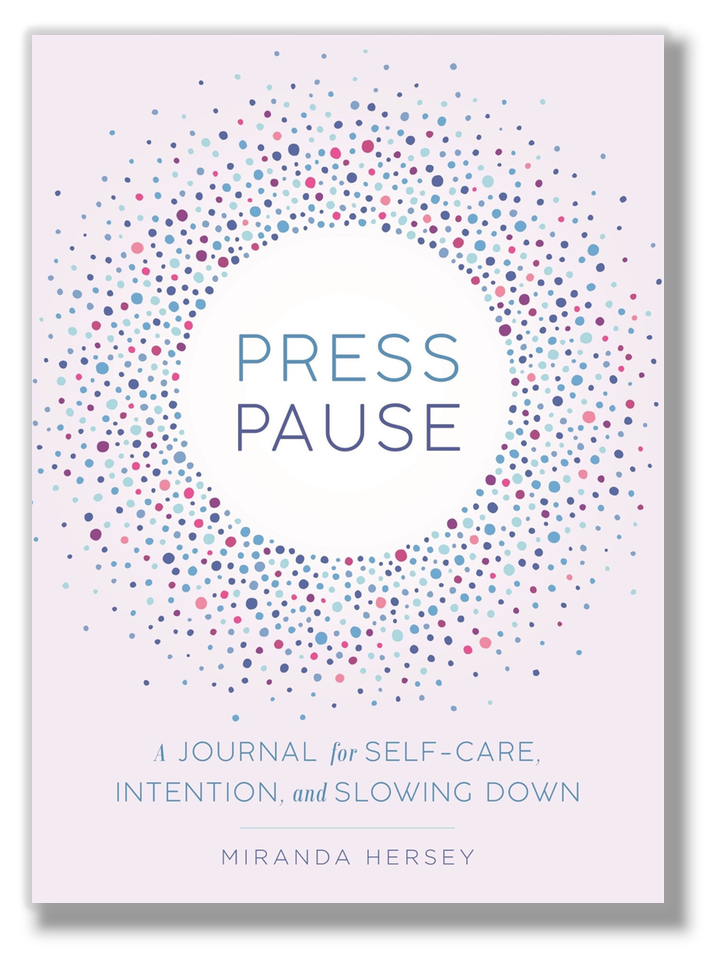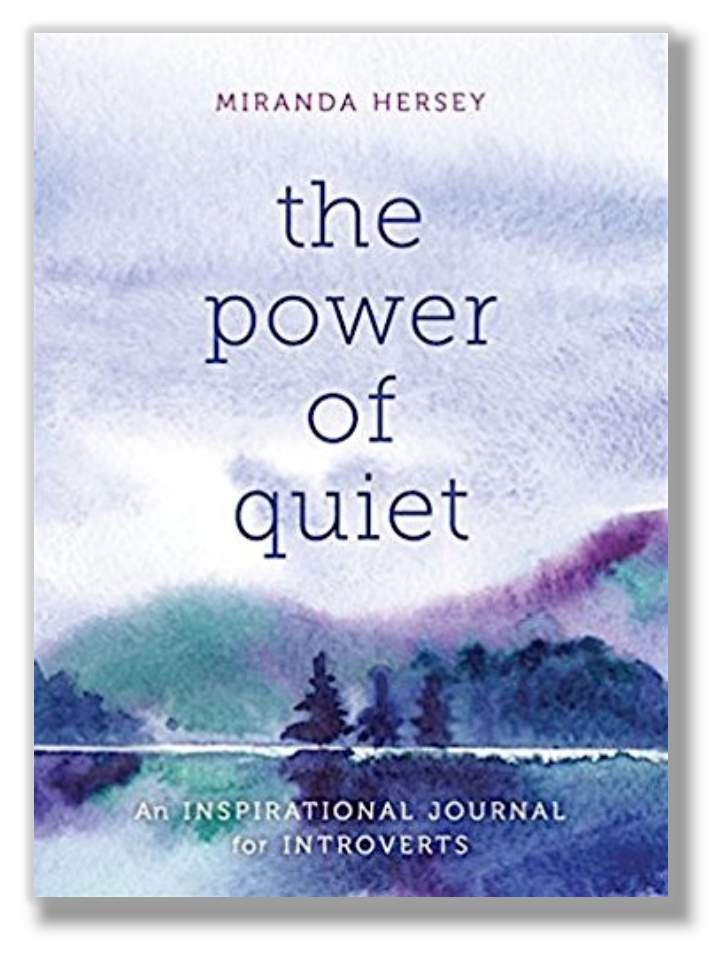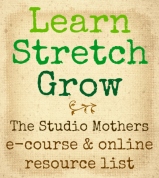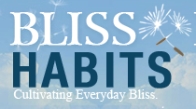Happy 2018 — and welcome to the first “How She Does It” post of the year. It’s a delight to introduce you to Kimberly Wachtel. Based in Western Massachusetts, Kim has more creative mojo than than we can really fit into a blog post. But we tried. Enjoy!
 SM: Please introduce yourself and your family. Tell us about your artwork/creative endeavors.
SM: Please introduce yourself and your family. Tell us about your artwork/creative endeavors.
KW: Hello! I’m Kimberly Wachtel and I’m a painter, singer, gardener, wife, and mother of a 5.5-year-old boy and an almost-3-year-old girl. I have a design business, Where Earth Meets Sky Designs, where I make and sell paintings, paper cuts, and embroideries as original pieces, greeting cards, and archival prints. Where Earth Meets Sky Designs also includes my garden business: I work in clients’ gardens doing design, plantings, and upkeep in the warm months.
I sing and perform with my husband as Radio Free Earth. We present rare gems we’ve unearthed from the tremendous heritage of American and world music during the past hundred years, along with insightful, incisive, humorous, and moving originals. Radio Free Earth forges a coherent repertoire from diverse elements. At once irreverent and serious, humorous and instructive, acoustic and electric, political and spiritual, Radio Free Earth takes you on a musical journey that illuminates the human condition along with possibilities for transcending our present circumstances. I’m involved with other musical projects in my community as well.

SM: What goals do you have for your art? How would you define your “life’s work”?
KW: My dream is to have my life be my art and my art be my life. I have always loved singing, music, creating, and appreciating art — and a little later I fell in love with gardening. Slowing down to look carefully, listen fully with my heart, smell intently, taste the products of my and others’ labor, and to feel with my whole body is what brings me the most meaning and joy. For me, art, singing, music, and creating is about deeply connecting. I try to take moments in the day to do this even when I’m not in the studio or I’m not officially “working.” I pull the car over to take a photograph; enjoy the aroma, color, and textures of the plants I’m working with or the food I’m preparing for dinner; turn the music up loud to fully enjoy a song and let myself look out the window and get lost in a daydream.
 The year before I became pregnant and had my first child I grew interested in and passionate about looking back to traditional methods, particularly the folk art and practices of Poland, Hungary, and Eastern Europe, as a point of inspiration for my life’s work and art. In 2011, I spent six weeks in Poland and Hungary. I was part of a summer program at a university in Krakow where I studied, in particular, Polish folk arts. I spent quality time with my family in Poland and Hungary as well. My art, gardens, and cooking especially connect me to my ancestors who worked the land and had trade skills there. My goal is to learn more and return to Eastern Europe with my family to meet others who are the keepers of traditions, conduct a research project, and write about my connections there.
The year before I became pregnant and had my first child I grew interested in and passionate about looking back to traditional methods, particularly the folk art and practices of Poland, Hungary, and Eastern Europe, as a point of inspiration for my life’s work and art. In 2011, I spent six weeks in Poland and Hungary. I was part of a summer program at a university in Krakow where I studied, in particular, Polish folk arts. I spent quality time with my family in Poland and Hungary as well. My art, gardens, and cooking especially connect me to my ancestors who worked the land and had trade skills there. My goal is to learn more and return to Eastern Europe with my family to meet others who are the keepers of traditions, conduct a research project, and write about my connections there.
Humankind has taken a turn towards living a polarized, disconnected life. Often in our contemporary, capitalistic, consumer-driven culture we lose touch with our connection to the more basic and beautiful natural world and rhythms. The old peasant ways show us the natural life cycle rhythms that create a real and sustainable connection to our place on Earth. Learning from and practicing folk ways may be an antidote to what ails contemporary society: mentally, spiritually, politically, and socially. People who work the land are deeply connected to the seasons and their immediate landscape: plants, animals, weather, seasons, and life cycles. My goal is to reflect this idea in the images I create, in the gardens I tend, in the food I make, the songs I sing, and the research I want to do in future when my children are a bit older.
I’m happy that my desire to be an artist, a desire I’ve had my whole life, is reality. As I grow my card business throughout the year, make new art in the colder months, and work in the gardens during the warmer months, I see that my work is connected to the cycles of the seasons of New England. Doing seasonally appropriate work helps my business become economically viable and keeps me engaged physically and creatively to the seasons and cycles. Along with my above-stated goals, I hope that my art and garden design work creates sustainable income for me and my family in years to come.
SM: How has motherhood changed you creatively?
KW: Motherhood has been mainly a blessing to my creativity. At the same time, being a mom is the hardest job I’ve ever had. I chose to be a stay-at-home mom with my kids while they were infants and young toddlers. For about four years I stopped working for other people. I spent some of that time working on my own art business. This period, as I learned how to be a mother of two children, gave me space and perspective to reimagine the kind of work I really want to do and how I can do it. Being home with my kids during their young years really pulled me away from my studio practice and my ability to take on regular garden business clients. All of that began to change last spring when I found regular, full-day childcare and preschool for my kids 2-3 days a week.

Before kids, I was really good at wasting time and putting others’ needs before my own. Now, as a self-employed mom with art, garden, and music projects, I can’t waste my time. All the extra tasks and attention that came along with motherhood definitely made it harder for me to waste time. I still struggle with work/life boundaries and get pulled out of my creative time to problem solve a family task, like putting away the toys littering my living room. I’ve become better at really using the three six-hour days I have to myself each week to get into the studio or out in the gardens to work. I am extremely gratified to see that getting clear on my artistic vision and abilities, taking risks, and slowly putting one foot in front of the other have added up to much meaningful, creative work and a meaningful, creative life with my family.
SM: Where do you do your creative work?
KW: I do my art in my home studio, a lovely room we made out of a three-season porch the spring before my son was born. I had been working in our second bedroom but that had to become our kids’ room. I feel so grateful to have this beautiful space (with doors!) that is fully mine. I work outside in my gardens and others’ gardens. I practice music from my home and others’ homes and perform out and about, mostly locally. I travelled to Poland and Hungary in order to understand and connect with my creative muse.I plan on doing more of my creative work and research while traveling with my family when my kids are a bit older.

SM: Do you have a schedule for your creative work?
KW: Yes! Monday, Tuesdays, and Fridays my son is in kindergarten and my daughter is in daycare/preschool. I work best in the mornings. I try to get into my studio by 8:30 am to 9:00 am after driving my kids to school. I work for a couple of hours then take a break. Then I work until I need a walk around 1:30 pm — or I skip the walk and work straight through until I need to be with my kids around 3:00 pm. Daytime hours are best. I’m too tired and mentally foggy at night to do good work. I’m not good at working while my kids and husband are home. The threat of being interrupted looms large and is too much to bear. Sometimes I steal time on the weekends when my husband can be with the kids for a few hours. Music practice and performing is year round and mainly done in the evening after the kids are in bed. We practice music in the living room or in my husband’s “music shed” in the backyard so a babysitter is not needed, thankfully. However, having relationships with a few really good babysitters makes gigging out in the evenings possible.
SM: What does creative success mean to you?
KW: Creative success means never giving up on your creative dreams and practices. Sometimes I have to accept that I will not get a lot accomplished or completed. This is hard. For example, in the three years since my daughter was born I have not made a new painting. All of that is changing now and I’m beginning to paint again and make new designs. Putting one foot in front of the other and making even the tiniest steps towards fulfilling an idea or meeting a goal adds up and eventually leads to completion or accomplishment. I feel most successful when I’m able to complete a project or fulfill a goal. It also feels really good to see my card business growing and my designs being enjoyed in stores. I’m happy that my art and garden business are able to bring in some money for my family. Creative success is engaging with myself and others to bring something beautiful into the world. The beauty shared may be a moment in a song, a sound or lyric sung, an image that reminds one of someone or something that is loved, or planting a beautiful garden that pulses with life and color.
SM: What makes you feel successful as a mother?
KW: Laughing, smiling, cuddling, talking, teasing, reading, playing, and connecting with my kids. The moments truly connecting with my children make me and them feel really good! Growing and making healthy food and feeding it to my family also feels good, although I’m not sure how much the kids appreciate it yet. As I work on having clearer work/family boundaries I think I will more fully enjoy time with my kids and time with my work without feeling guilty, like I’m always pulled to do other than what I’m doing in the moment.
 SM: What do you struggle with most?
SM: What do you struggle with most?
KW: I struggle with the endless tasks, messes, noises, to-do lists, and attention my family needs from me. These things pull me away from where I feel most at peace and happy, the quiet moments reflecting, appreciating and/or creating something beautiful. I struggle with feeling angry with myself and my family because I can’t always figure out how to create clearer boundaries and more space for myself, my work, and time to just enjoy playing and engaging with the kids.
It is hard to have so much work, so many ideas, and so little time to myself. Since my husband is the main breadwinner, his job and work responsibilities come first. At any time my work can be interrupted by a snow day, illness, holiday, or an absolutely must-do task.
SM: What inspires you?
KW: Beauty, beauty, beauty! Authenticity, imperfection, nostalgia, the handmade, nature, plants, desire, horizons, warmth, love, the sky, bright colors, folk traditions, seasons, life cycles, mystery, the moon and stars, passion…
My card designs are especially inspired by the folk-art traditions of my ancestors. I love the colors and patterns found in embroidery from Poland and Hungary. I love the designs that decorate pisanki (decorated Easter eggs), woodcarvings, paper cuts, and folk paintings.
SM: What did you do in the last month that felt hard?
KW: The past month or so has been an exercise in me letting go and accepting that I can’t control my schedule. I had some health issues come up, out of the blue, that made it impossible to work for a few weeks. Then my son was home sick, we had a snow day, and finally the holiday schedule made it difficult to get momentum going in my studio. I’m working on new card designs and am preparing for two art openings in the spring. I have deadlines looming at the end of February so I feel the pressure to get things done. I find it hard to be the person in the family who constantly needs to adjust to changes in schedules because of health, weather, and holidays. This reality eats into my already limited alone hours for work.
SM: What do you want your life to look like in 10 years?
KW: In a coupIe of years both kids will be in school fulltime. As this happens, I want my art and garden design to be a source of sustainable income. I want my body to continue to be healthy and strong so that I can keep up with strenuous garden tasks. I want to live in Poland with my family for a year and perhaps travel back and forth regularly to continue my study of Eastern European folk traditions. I’d like my children to see how other cultures live. I’d like them to learn another language by living somewhere where English is not spoken as a first language. I’d also like to learn Polish well enough to get around easily and converse with family, friends, and others I meet on this journey. I’d like to bring our music overseas and play out while we live and travel. I want my kids to be healthy and engaged, in a kind way, with the world around them. I want to share the beauty found in this world, firsthand, with my children and others through my art, music, and work. I’d like to engage in all this over the next 10 years.
SM: What are you reading right now?
SM: What are your top 5 favorite blogs/online resources?
KW: I just started up my Instagram account and I’m a bit obsessed. I love posting pictures of beautiful things that I see as I go through my days. I also seek out the beauty that other people share from around the world about their lives and creative pursuits.

I have a complicated relationship with Facebook. I love and hate it. Facebook is great for keeping in touch, even if superficially, with family and friends near and far as well as social and cultural events. I use it as a tool for posting my own events. I hate Facebook because it sucks me in and I can easily waste time. Facebook can really feed the things I find so ugly about our contemporary world. I must be mindful of what I read and post. I don’t want to feed my fears on Facebook’s extreme negativity and polarization.
I used to blog regularly and follow other blogs on Blogspot. I miss it and the relationships I made with fellow creatives around the world. Since my daughter was born, I no longer regularly write posts and read those of others. I have a “Musings” page on my website and think about writing more regularly there. Instagram feels like a shorthand version of what I experienced when I blogged, and is more doable with the time I have available.
SM: What do you wish you’d known a decade ago?
KW: I wish I’d had more confidence and believed in my artistic desires, pursuits, and abilities 10 — heck, 20 — years ago! As a young adult, I put other people’s ideas, projects, and dreams before my own. In my 20s I was not super clear on what I wanted. I’ve been working on music and performing regularly with Radio Free Earth since I married my husband 16 years ago. I taught art, continued adult painting classes here and there, and never gave up on learning about and making art as a young adult, although I didn’t know then that one day my art would become a business. Luckily when I was 34-35 years old I was able to sort out some things for myself, get clear on my artistic vision, and begin to more deeply pursue art and creativity. This happened right before I had children. In a way, my creative self was born through maturing, preparing for, creating, and giving birth to my own children. When I look back on the last 20 years I see that I’ve been on a creative path all along. Everything that happened and that I chose was and is part of the evolution of becoming. This is the path I continue to walk. I’m not there yet and I still have a lot of work I want to do.
SM: What advice would you offer to other artists/writers struggling to find the time and means to be more creative?
KW: My advice is to quiet down and listen to that deep inner voice/pull. Make time to connect with it. Listen to your deep knowing and follow your intuition. Things happen in mysterious ways. Take risks, do the work, and make your needs and work important enough to give them proper attention and energy. Don’t push your creative desires aside for too long. It’s ok to hire a babysitter, find a suitable and loving daycare, send your kids to school, and ask for space away from your family. Something always has to be ignored in order to give full attention to something else. Just try to keep it all in balance. Even when your children are young, it’s OK to claim space and time for yourself, even though it can be very hard to do. Continue putting one foot in front of another, even if baby steps, towards goals. You’ll be happy and surprised that in a week, a month, a year, or 10, you’re able to get things accomplished and make your dreams become real.
:::::
Creative reader! Would you like to be featured at Studio Mothers? Send a note to Miranda at ideas@mirandahersey.com.
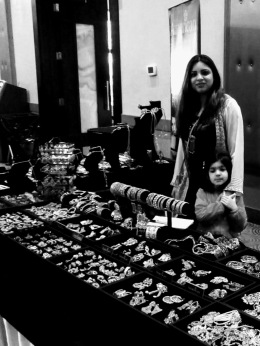 Today I’m delighted to introduce you to Pakistani mother artist and amazing jewelry designer Ifrah Shahid Khurram, currently residing in Canada. Ifrah has been featured in She Canada as a she-preneur of the month. Lets have a chat with the designer and explore the ebb and flow of her success story!
Today I’m delighted to introduce you to Pakistani mother artist and amazing jewelry designer Ifrah Shahid Khurram, currently residing in Canada. Ifrah has been featured in She Canada as a she-preneur of the month. Lets have a chat with the designer and explore the ebb and flow of her success story! When did you explore yourself as an artist?
When did you explore yourself as an artist? I found some time to myself when our older daughter started school. During those hours I explored various ways to stay busy other than housework. I was in search of a career that would allow me to look after my kids at the same time. My love for creativity and crafting jewelry returned when I helped a friend market her jewelry. It was challenging. With Almighty Allah’s help and my husband’s constant support and encouragement, we faced deadlocks and losses but persevered.
I found some time to myself when our older daughter started school. During those hours I explored various ways to stay busy other than housework. I was in search of a career that would allow me to look after my kids at the same time. My love for creativity and crafting jewelry returned when I helped a friend market her jewelry. It was challenging. With Almighty Allah’s help and my husband’s constant support and encouragement, we faced deadlocks and losses but persevered.
 Which part of the day makes you feel most energetic and creatively driven?
Which part of the day makes you feel most energetic and creatively driven?

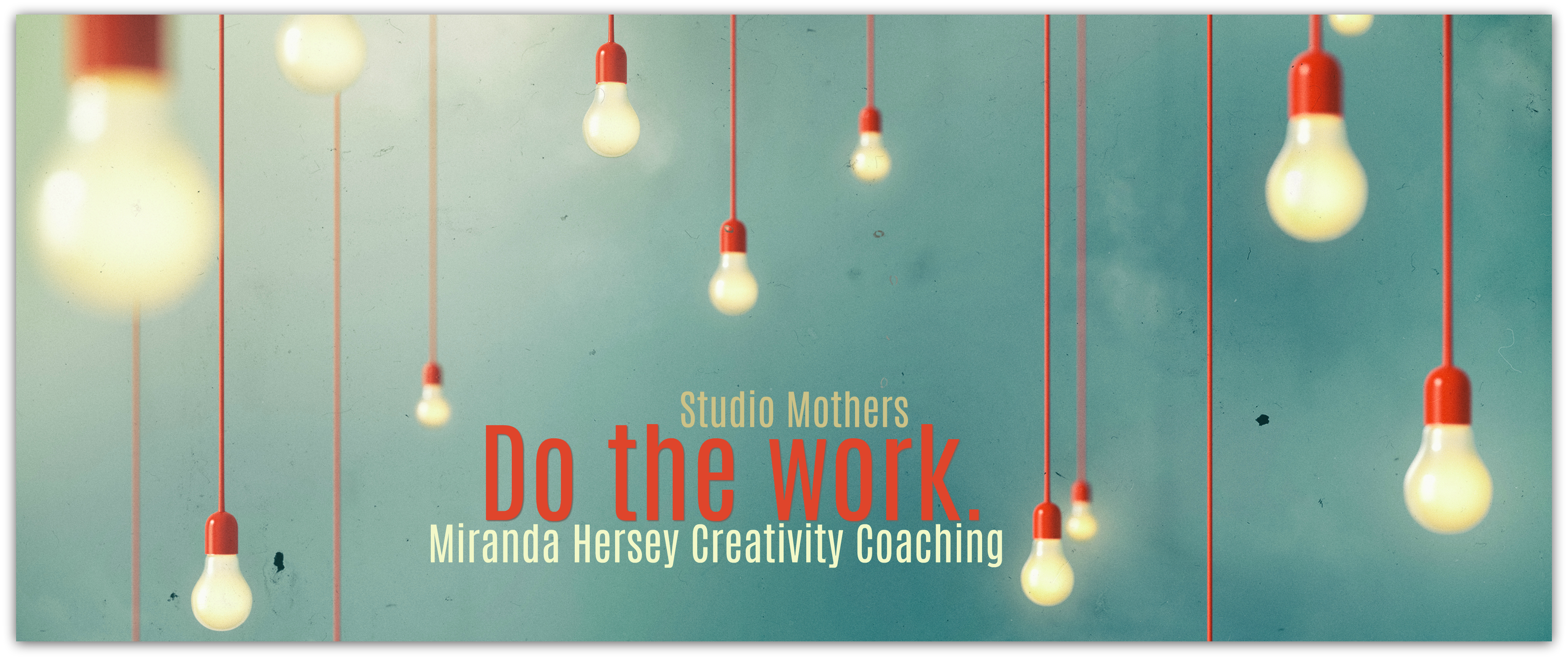

 SM: Please introduce yourself and your family. Tell us about your artwork/creative endeavors.
SM: Please introduce yourself and your family. Tell us about your artwork/creative endeavors.
 The year before I became pregnant and had my first child I grew interested in and passionate about looking back to traditional methods, particularly the folk art and practices of Poland, Hungary, and Eastern Europe, as a point of inspiration for my life’s work and art. In 2011, I spent six weeks in Poland and Hungary. I was part of a summer program at a university in Krakow where I studied, in particular, Polish folk arts. I spent quality time with my family in Poland and Hungary as well. My art, gardens, and cooking especially connect me to my ancestors who worked the land and had trade skills there. My goal is to learn more and return to Eastern Europe with my family to meet others who are the keepers of traditions, conduct a research project, and write about my connections there.
The year before I became pregnant and had my first child I grew interested in and passionate about looking back to traditional methods, particularly the folk art and practices of Poland, Hungary, and Eastern Europe, as a point of inspiration for my life’s work and art. In 2011, I spent six weeks in Poland and Hungary. I was part of a summer program at a university in Krakow where I studied, in particular, Polish folk arts. I spent quality time with my family in Poland and Hungary as well. My art, gardens, and cooking especially connect me to my ancestors who worked the land and had trade skills there. My goal is to learn more and return to Eastern Europe with my family to meet others who are the keepers of traditions, conduct a research project, and write about my connections there.

 SM: What do you struggle with most?
SM: What do you struggle with most?
 Of all the ways to combine creativity and motherhood, the performing arts are among the most challenging. But the obstacles inherent to this path are no match for the fierce passion, commitment, and intelligence of
Of all the ways to combine creativity and motherhood, the performing arts are among the most challenging. But the obstacles inherent to this path are no match for the fierce passion, commitment, and intelligence of  It just so happened that as I was applying and auditioning to MFA programs, I got pregnant. The funny thing is that we were trying. It just never occurred to me that I wouldn’t be able to do both things at once. I had very little experience with babies and I just thought they’d sleep all the time and not move or talk that much (oh, the naïveté). My son was born my first week of my MFA program, and truthfully, that first semester was blisteringly hard. I returned to class full time after two of the shortest and longest weeks of my life, and had to sit on a donut or lie down on a yoga mat in class because I couldn’t sit on a regular chair. I was not only the least experienced actor in my program, but I was now behind, my boobs leaked at random times, and I had to go into evening rehearsals for a play when my son was only 6 weeks old.
It just so happened that as I was applying and auditioning to MFA programs, I got pregnant. The funny thing is that we were trying. It just never occurred to me that I wouldn’t be able to do both things at once. I had very little experience with babies and I just thought they’d sleep all the time and not move or talk that much (oh, the naïveté). My son was born my first week of my MFA program, and truthfully, that first semester was blisteringly hard. I returned to class full time after two of the shortest and longest weeks of my life, and had to sit on a donut or lie down on a yoga mat in class because I couldn’t sit on a regular chair. I was not only the least experienced actor in my program, but I was now behind, my boobs leaked at random times, and I had to go into evening rehearsals for a play when my son was only 6 weeks old. SM: What goals do you have for your art? How would you define your “life’s work”?
SM: What goals do you have for your art? How would you define your “life’s work”? SM: What does creative success mean to you?
SM: What does creative success mean to you? SM: What do you want your life to look like in 10 years?
SM: What do you want your life to look like in 10 years? Today I’m thinking about role models. Role models on the international stage, alive today, who are exemplars for ourselves and for our children. As we grapple with continually breaking stories about A-list sexual impropriety, sexual assault, questionable business dealings, and most every kind of NO YOU DIDN’T, it’s increasingly difficult to settle on well-known paragons of the behavior that we want to emulate and want to hold up as examples to our children.
Today I’m thinking about role models. Role models on the international stage, alive today, who are exemplars for ourselves and for our children. As we grapple with continually breaking stories about A-list sexual impropriety, sexual assault, questionable business dealings, and most every kind of NO YOU DIDN’T, it’s increasingly difficult to settle on well-known paragons of the behavior that we want to emulate and want to hold up as examples to our children. Becca Hitch is a
Becca Hitch is a  What, you say, can possibly be the matter? With two beautiful kids, and another on the way; the fittest and finest of husbands; the house; the happy extended family; the wonderful friends… I have it all in many ways. And I do. And I love it. There is nothing the matter, and there is everything the matter.
What, you say, can possibly be the matter? With two beautiful kids, and another on the way; the fittest and finest of husbands; the house; the happy extended family; the wonderful friends… I have it all in many ways. And I do. And I love it. There is nothing the matter, and there is everything the matter. I have learnt to adapt my writing for this new season. Song ideas are hastily jotted down on paper amidst the battleground of cooking dinner with children attached to my legs. I record snippets on my phone either in snatched moments whilst children sleep; or to the accompaniment of screaming, demanding voices, and shared instrument participation from tiny hands. I am pleased by this. It is something (although my recordings could not be understood by others).
I have learnt to adapt my writing for this new season. Song ideas are hastily jotted down on paper amidst the battleground of cooking dinner with children attached to my legs. I record snippets on my phone either in snatched moments whilst children sleep; or to the accompaniment of screaming, demanding voices, and shared instrument participation from tiny hands. I am pleased by this. It is something (although my recordings could not be understood by others).

























